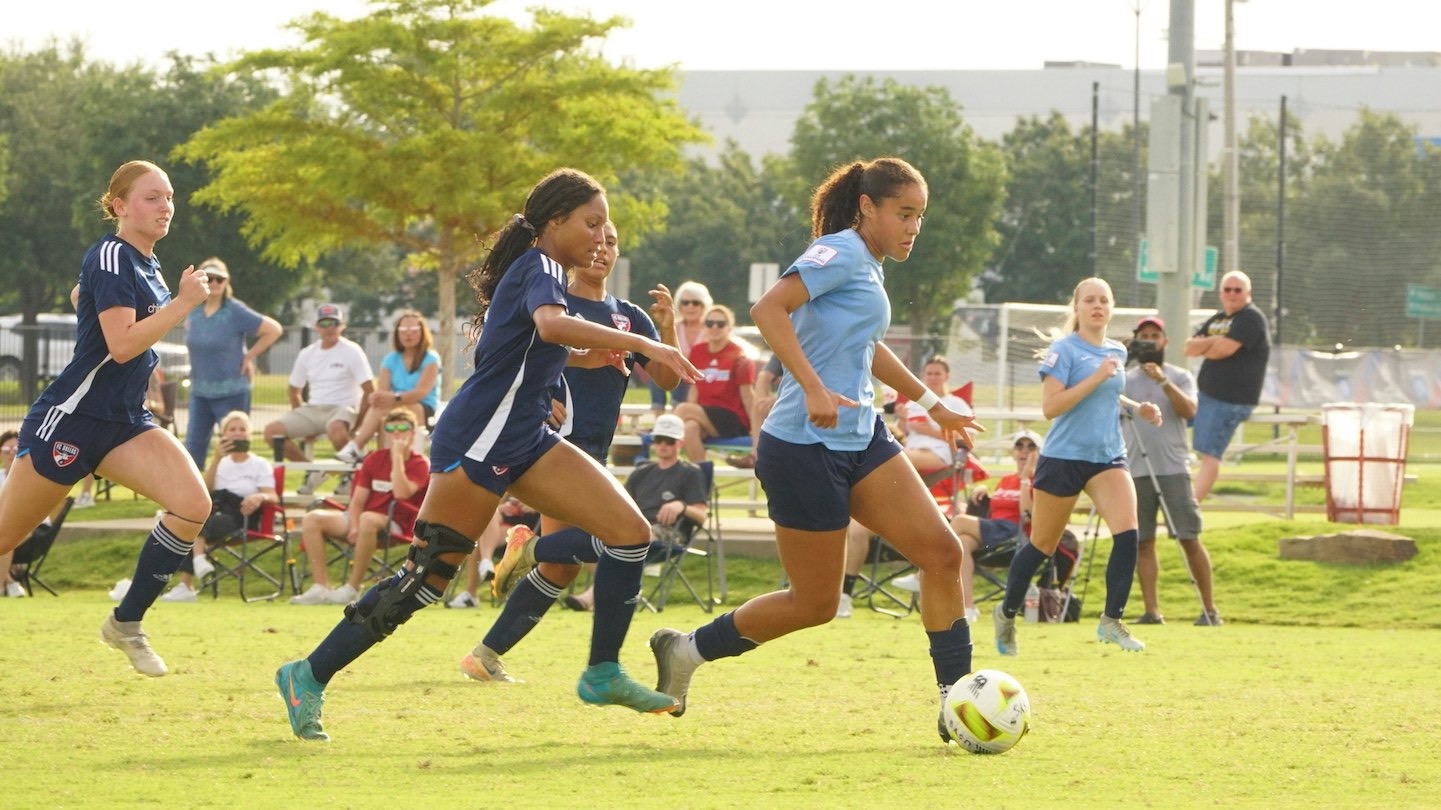Over the past two years, we’ve seen an encouraging rise in meaningful reports on youth sports and soccer in the United States. These resources offer essential guidance for parents, coaches, and educators seeking to better understand how to support healthy athletic development.
If you haven’t yet, I strongly recommend reviewing the following foundational reports:
- Aspen Project Play Reports: www.aspenprojectplay.
org/reports - Nike’s Designed to Move Report: www.designedtomove.org
Once you’ve absorbed the insights from these documents, I also suggest diving into two critical U.S. Soccer publications:
- Best Practices for Youth Development
- US Youth Soccer Player Development Model (my personal favorite)
Additionally, the USOC’s guidance on Long-Term Athlete Development (LTAD) provides an excellent framework for shaping youth sports participation.
What’s Going Wrong?
Despite the abundance of high-quality research and expert recommendations, we’re witnessing an alarming trend: young soccer players are increasingly over-scheduled, over-coached, and over-committed.
Let’s break down a few troubling developments:
- The Death of Free Play: Gone are the days when kids would organize pickup games, make their own rules, and play until the sun went down. Today, free play has been replaced by formal team registrations—often across multiple clubs and leagues.
- Parental Overcommitment: Many well-intentioned parents sign their children up for every available program in hopes of keeping them safe, active, or ahead of the curve. Unfortunately, this often leads to scheduling conflicts, chronic fatigue, and a growing risk of overuse injuries.
- The Multi-Sport Movement: While there’s value in sport sampling between ages 6–12, this concept is being misapplied. It’s not about doing every sport all the time—it’s about doing a few at the right time and with balance.
- Arms Race Among Clubs: Clubs, in a bid to remain competitive, are offering more tournaments, leagues, and events than ever before. Some teams now participate in two leagues, several cups, and multiple tournaments—year-round.
- The “More Is Better” Fallacy: Parents chasing scholarships or elite status are buying into the myth that playing more games equals better development. In reality, this often leads to poor technical progress and mental burnout.
- Trainer Incentives: Many professional trainers work on a per-game or per-session basis. More games mean more income, which can skew priorities away from what’s best for the child.
- The Tournament Culture: Tournaments are popular, profitable, and often fun—but they make little physical or developmental sense. Playing four games in two days isn’t just counterproductive, it’s potentially harmful.
- School Sports Madness: Some school programs defy all principles of recovery and workload management. We must ask: How can educational institutions ignore research on player health and run programs that prioritize competition over safety?
The Alarming Consequence: 100+ Games a Year
It’s not uncommon for players aged 12–18 to participate in more than 100 games annually once school sports and tournaments are factored in. This flies in the face of every expert recommendation:
- Ages 10–14: 20 games per year
- Ages 14–18: 30 games per year
(Source: US Youth Player Development Model)
Even more worrying is the recommended 3:1 practice-to-game ratio, which is rarely followed. Are youth players really training 300 times per year to balance out those 100 games? Of course not.
Here’s what U.S. Soccer recommends:
| Age Group | Frequency | Duration | Practice:Game Ratio |
| U-6 | 1 day/week | 45 minutes | 1:1* |
| U-8 | 1 day/week | 45–60 minutes | 1:1 |
| U-10 | 2 days/week | 60–75 minutes | 2:1 |
| U-12 | 2–3 days/week | 75 minutes | 2–3:1 |
| U-14 | 3 days/week | 75–90 minutes | 3:1 |
| U-16 | 3 days/week | 90 minutes | 3–4:1 |
| U-18+ | 4–5 days/week | 90–120 minutes | 4–5:1 |
Where’s the Rest?
Let’s not forget that most youth players are also participating in multiple sports. So when exactly are they supposed to rest?
- Are they receiving the recommended two-month rest period from organized sports each year?
- Are their bodies and minds given time to recover and reset?
In many cases, the answer is no.
What’s the Solution? A Sensible Sports Diet
The key lies in creating a balanced, thoughtful approach to sports participation. Like nutrition, a “sports diet” must include variety, moderation, and rest.
If your child hasn’t found a clear passion for one sport, sampling different sports seasonally is not only fine—it’s highly beneficial. Here’s an example of a balanced sports sampling plan:
- Winter: Basketball
- Spring: Soccer
- Summer: Beach volleyball
- Fall: Swimming and tennis
Of course, sticking to such a plan is difficult. Most sports now push for year-round commitments starting at young ages. But resisting that pressure can make a big difference in a child’s long-term love of sport and well-being.
A Word on Early Specialization
I grew up in the UK, idolizing my local team, Stoke City. I played other sports casually, but from a very young age, soccer was my passion. I stuck with it through university and beyond.
My point? While sport sampling has undeniable benefits, there’s also value in commitment—when it comes from within. If a child finds their passion early and chooses to specialize, that too can lead to joy, friendships, and even excellence.
Practical Advice for Parents and Coaches
- Observe which sport your child genuinely enjoys and seek a development-focused environment.
- Cross-train wisely. Look for complementary sports (for soccer, think basketball, volleyball, swimming).
- Coordinate schedules. Avoid conflicts and prioritize commitments.
- Insist on qualified coaches and developmentally appropriate environments.
- Set limits. Determine a healthy number of games and training hours per year.
- Schedule rest. Protect at least two months per year for unstructured time and recovery.
The Bottom Line: Protect the Joy
One of the most unfortunate outcomes of today’s sports culture is burnout. Kids are leaving sports earlier than ever, and that’s a tragedy. The system won’t change until more of us—parents, coaches, and educators—stand up and advocate for sensible sports diets.
Because in the end, it’s not about how many games they played. It’s about how much they loved the game—and whether we helped preserve that love.








